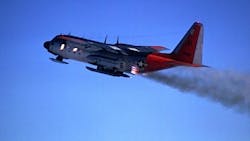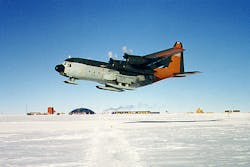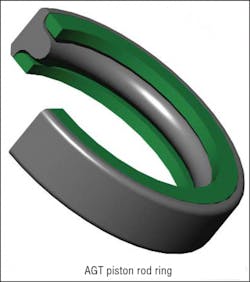This entry will be a brief departure from my coverage of the Old Timer from Royal Oak, Michigan.
While going through issues of H&P from the late 1980s and early 1990s for this series, I've been coming across interesting articles, many of which are still useful today — despite being more than 20 years old.
The article I'm reproducing today, written by former editor Dick Schneider, was originally published in the August 1988 issue. It's not really what I'd call useful, but it is interesting and demonstrates the tenacity of hydraulics.
Seals come out of deep freeze
After an aborted Antarctic takeoff by a specially equipped Lockheed LC-130F Hercules in 1971, the U.S. Navy, which operated the plane, and the National Science Foundation, which owned it, decided the craft was not salvageable. The Hercules was abandoned — under 35 ft of snow — until 1986, when the decision was reversed, and a team was sent in to dig the plane out of its icy tomb. The recovery team discovered that, 16 years after the crash landing, the plane’s hydraulic brake system, sealed with AGT piston rod seals from Greene, Tweed & Co. Inc., Kulpsville, Pa., was still holding pressure.
The rest of the ski-equipped Hercules was in pretty good shape, too. Some minor repairs were made, a runway was bulldozed out of the ice, and after an hour of preheating, the plane’s gas turbine compressor started and ran. The plane then flew to New Zealand for complete overhaul before resuming Antarctic flight service.
The link I provided to the LC-130F goes to an article on Wikipedia. It provides additional information in that the aborted takeoff was caused by a malfunction in the aircraft's jet-assisted takeoff system that caused the aircraft's nose landing gear to collapse. The Wiki page also contains a video of a rocket-assisted takeoff.
About the Author
Alan Hitchcox Blog
Editor in Chief
Alan joined Hydraulics & Pneumatics in 1987 with experience as a technical magazine editor and in industrial sales. He graduated with a BS in engineering technology from Franklin University and has also worked as a mechanic and service coordinator. He has taken technical courses in fluid power and electronic and digital control at the Milwaukee School of Engineering and the University of Wisconsin and has served on numerous industry committees.

Leaders relevant to this article:


